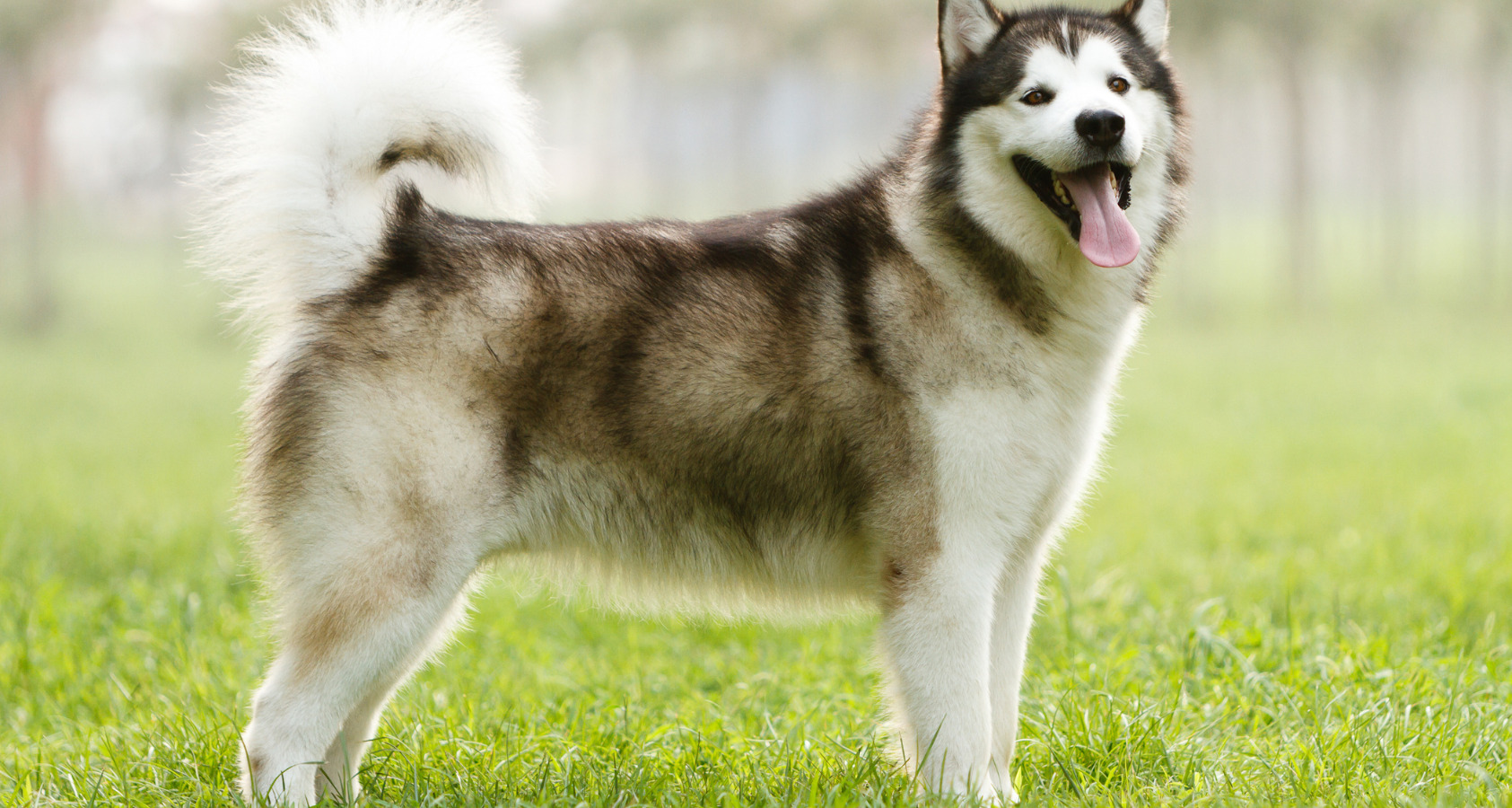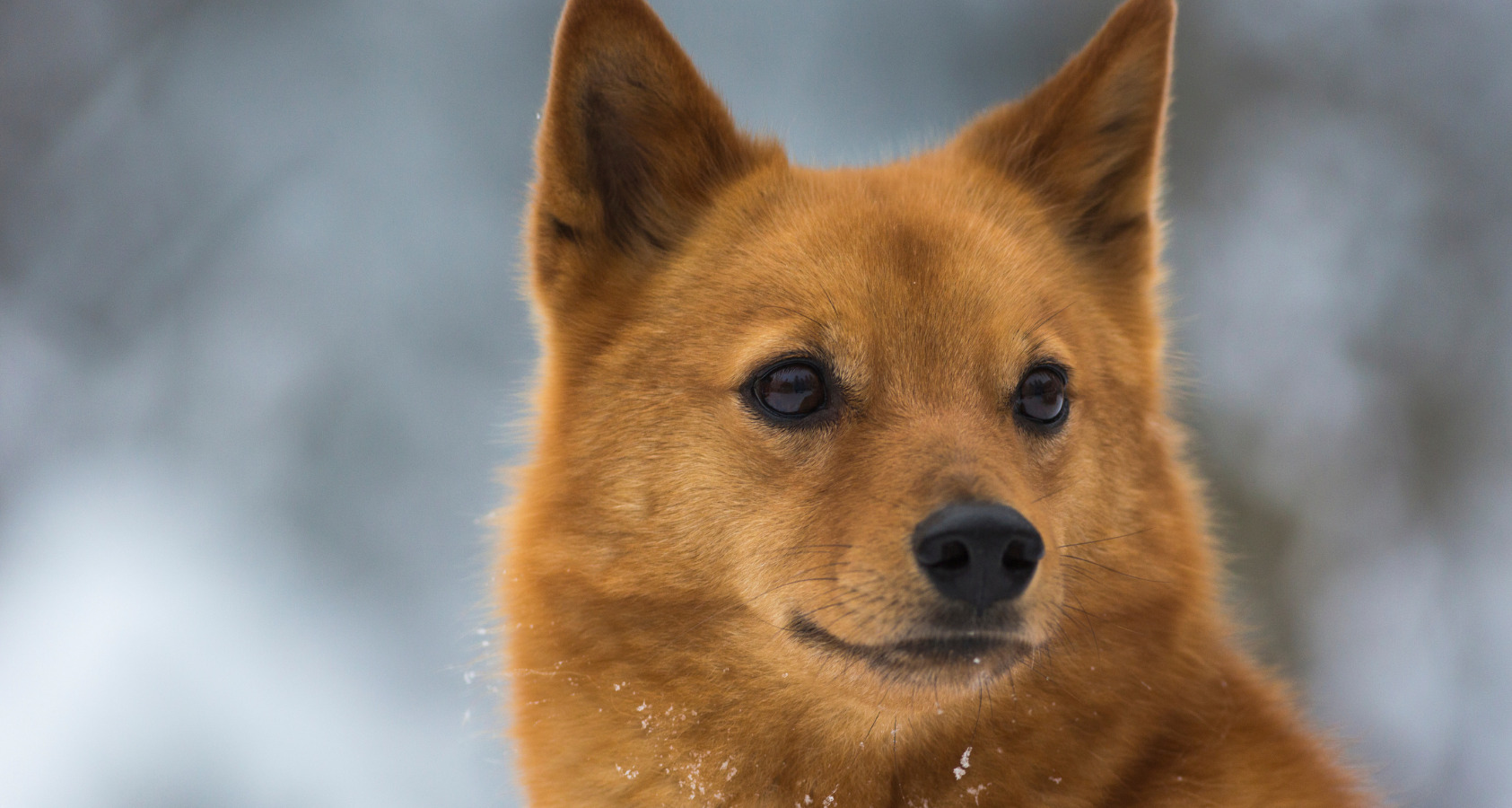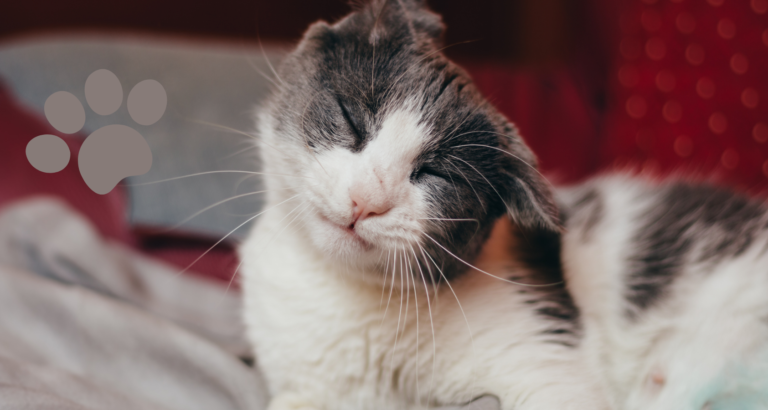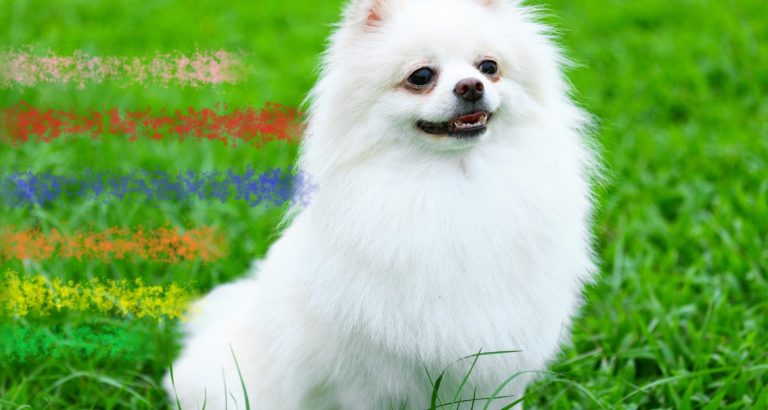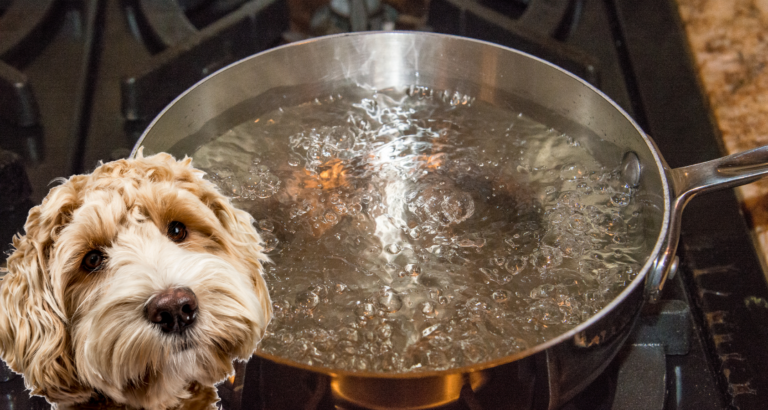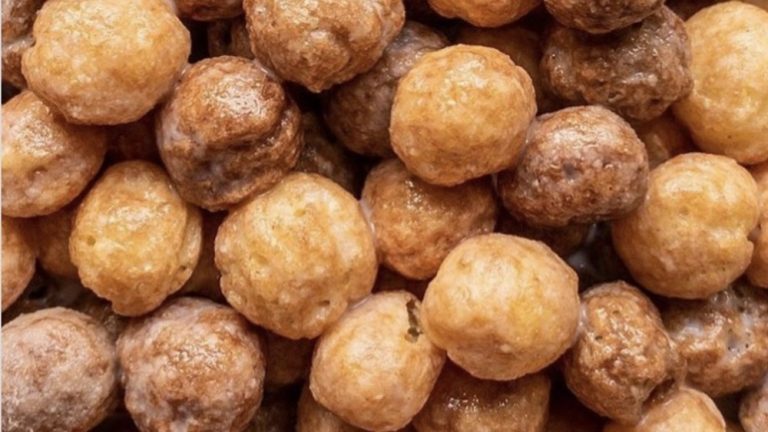21 Dog Breeds Similar To Huskies
Last updated on March 20th, 2023 at 05:48 am
Reading Time: 16 minutesThis post may contain affiliate links. If you click and buy we may make a commission, at no additional charge to you.
21 Dog Breeds Similar To Huskies
Huskies are medium-sized, strong dogs with multicolored eyes and striking facial masks. The ears are erect, and the neck is short. They are friendly but take no time to be independent or stubborn – proper training helps a lot. Plus, huskies have a dense and plush coat with a thick undercoat. You can expect any coat color in huskies from black to white and everything in between.
The facial features and clear lines of huskies make this dog breed extremely popular these days, but often, breeders cannot fulfill demands and get short of healthy Husky dogs. In such cases, it’s handy to be aware of dog breeds similar to Huskies for getting all their traits in another breed.
There are countless dog breeds similar to huskies, but the most popular are American Eskimo, Samoyed, Icelandic Sheepdog, Czech Wolf dog, Malamute, and Akita Inu. Similarly, Saarloos Wolfdog, Alaskan Klee Kai, Utonagan, Tamaskan, Finnish Spitz, and Keeshond also closely resemble Huskies. One of the most popular Husky mixes right now is the Pomsky, which we will cover another time.
So, this detailed guide covers every dog similar to a husky with all the traits mentioned. Don’t delay further and make a comprehensive study to avoid wrong purchases. Let’s go!
1. American Eskimo Dog

American Eskimo is an adorable dog that exactly looks like huskies, or you may call it a miniature husky for close resemblance. They have erect triangular ears and wedge-shaped heads with huskie-like facial features.
The American Eskimo is one step ahead in coat length and fluffiness. The soft coat is dense and plush, but there is only white color in this dog breed.
Similarly, American Eskimo carries huskies temperament – friendly but may get stubborn. They are loyal and love to be around their owners. Proper training from puppyhood helps them socialize and become great family pets. After socializing and training, American Eskimos warmly greet strangers.
The thick and dense coat of American Eskimos often tangles, so regular brushing is vital to prevent matting and to make them well groomed.
This dog breed is best for people looking for a dog similar to a husky but all white.
2. Samoyed
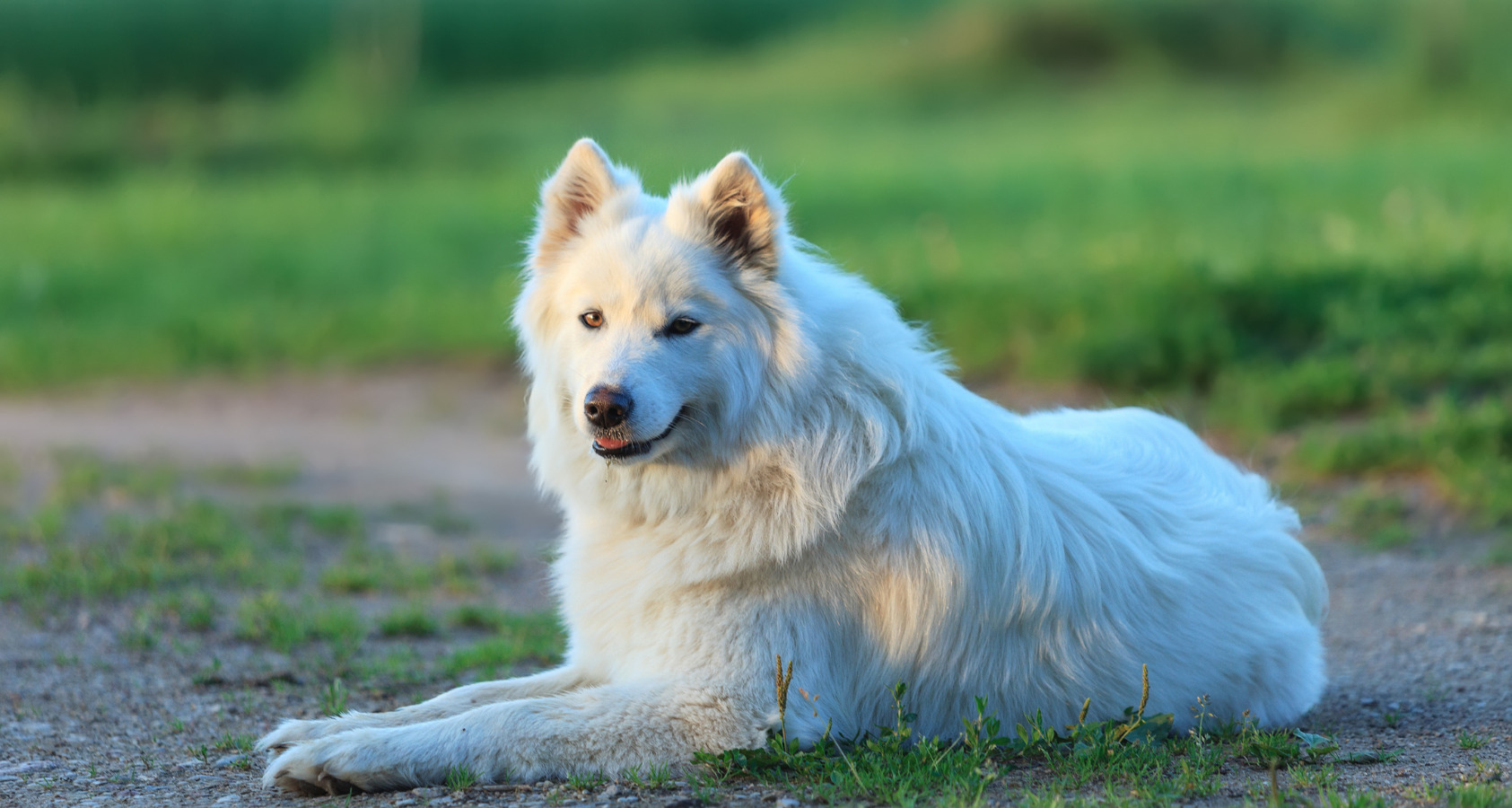
Samoyed is a medium-sized herding dog breed with strong body stature. They have broad head and erect ears like husky, which makes them unique. The fluffy tail curved over the back of Samoyed also looks nice, and you can notice a dark pigment or outline around the eyes, nose, and lips that make their features look sharper.
You may find Samoyed and previously discussed American Eskimo the same dog due to similar features, but the difference arises in their coat. Samoyed has an incredibly thick, harsh, straight coat with a full undercoat, while American Eskimo dogs have a single-layer coat, so be mindful and consider both breeds separate. Samoyed coat colors are limited, and white, white and biscuit, cream, or all biscuit color are expected.
Samoyeds are also friendly, affectionate, and playful dogs but reflect an independent attitude. They quickly get along with children or other pets if raised together. You must be careful when interacting with toddlers, as herding dogs can be a little trouble.
Don’t forget to brush your Samoyed coat daily to keep it looking straight and healthy.
3. Icelandic Sheepdog
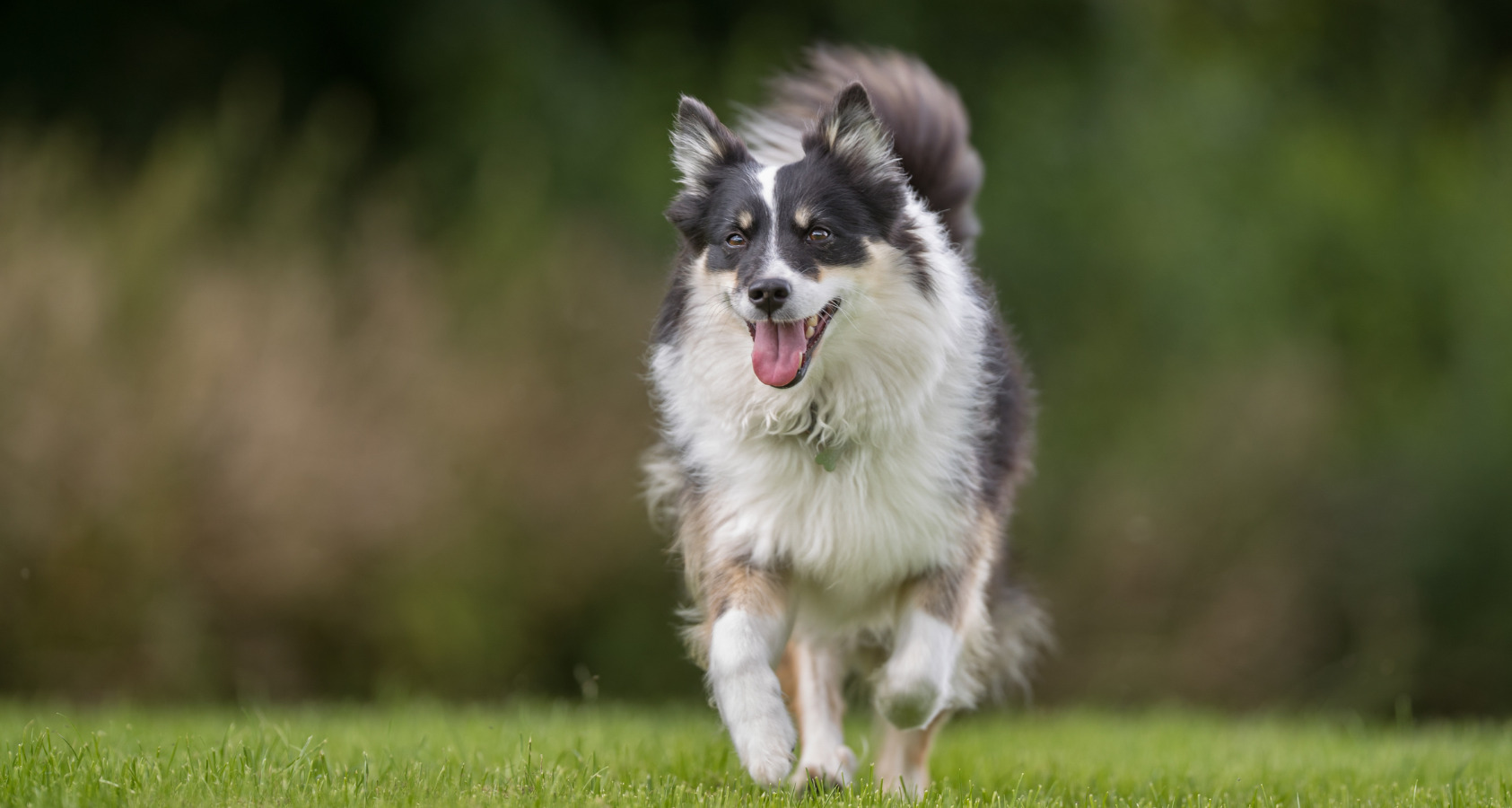
Iceland Sheepdog is a medium-sized herding dog with happy and friendly facial expressions. The breed is expressed by a foxy face, pointed ears, and a bushy tail. Their eyes, face markings, and body posture makes them a replica of huskies.
The coat of the Icelandic sheepdog could be medium or long but always have a thick, soft undercoat, which is waterproof. Straight or curly coats are possible in Icelandic sheepdogs in a broad color range. You can expect any color in this dog breed, including brown, chocolate, gray, black, fawn, and sable, with various markings and sometimes a black mask.
Iceland sheepdog has a lovely and friendly temperament. They quickly get along with kids and other pets plus eagerly please their owners without getting stubborn.
The grooming requirements of Iceland sheepdogs depend on their coat length – a longer coat requires frequent brushing, while a short coat can give you a break in the grooming.
4. Czech Wolfdog
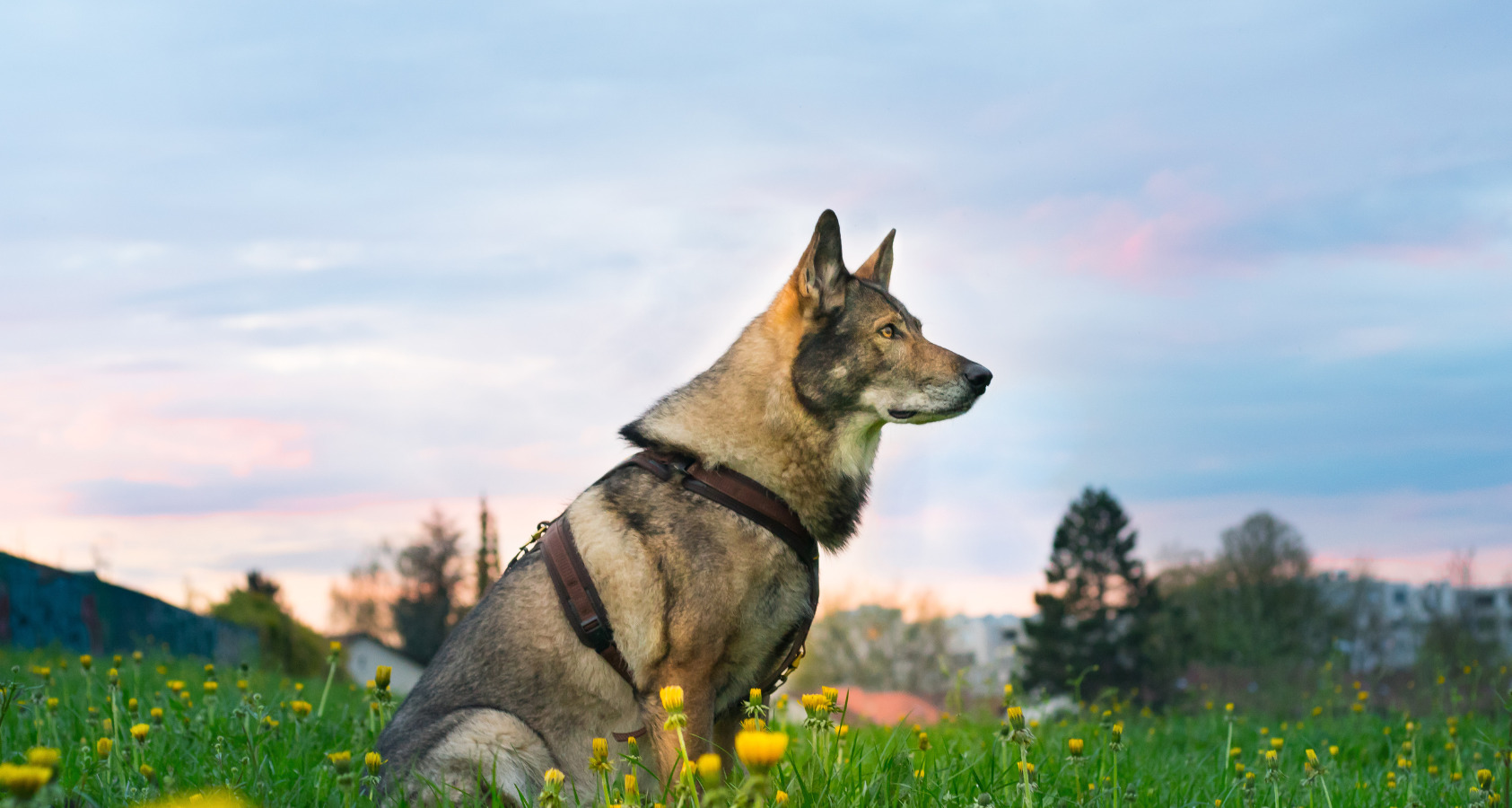
The Czech wolfdog is a large working dog with husky and wolf-like physical features. Their body shape, facial features, markings, movement, and everything reflect huskies. They have short, triangular shape ears that stand upright, and the neck is thick.
The coat of the Czech wolfdog is medium, thick, and straight, with no fluffy fur that many dog lovers require, while black, gray, and silver are coat color possibilities.
Czech wolfdogs are not friendly with anyone but have a strong bond with their family. Czech wolfdogs are also loyal and hardworking but dominant and independent, like huskies. Due to this nature, this dog breed needs early socialization and supervision in families with children.
You can do weekly brushing of Czech wolfdog to manage thick coat.
5. Saarloos Wolfdog
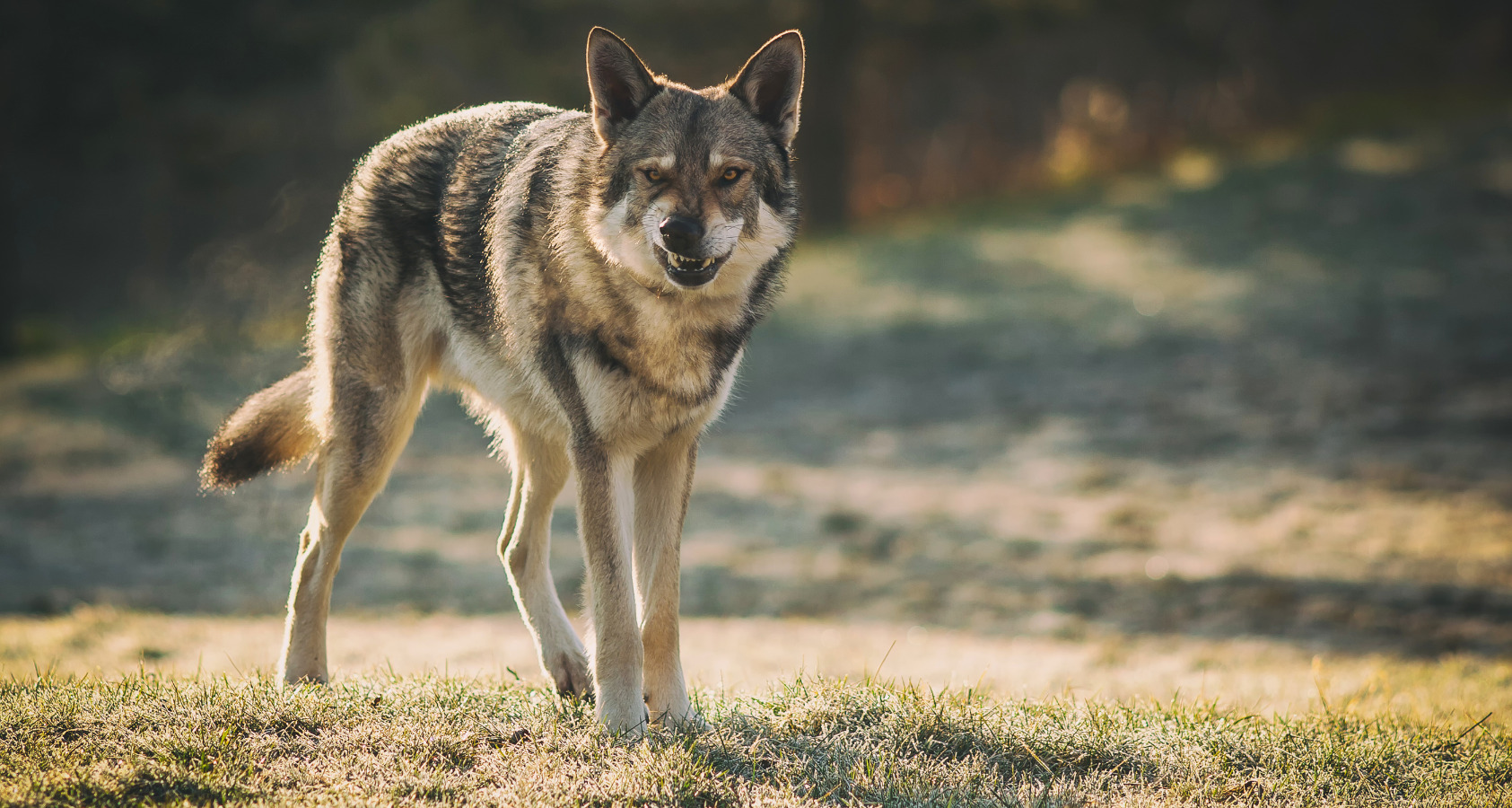
Saarloos wolfdog is a large dog breed with a husky-like appearance. They tend to be tall with a relatively large and wedge-shaped head that is broad and long. Their eyes are almond-shaped and are yellow to brown, while their thick muscular neck makes them sturdy. Saarloos wolfdog’s erect ears also make them similar to huskies.
If you are concerned about Saarloos wolfdog coat and wonder if it is furry or not, here is a pleasant note their coat is medium in length, moderately thick, and straight in texture. You can have white, cream, gray, and brown colors in their coat.
Like huskies, Saarloos wolfdog is also good-tempered and goes well with the family members but needs thorough socialization. On the other hand, they tend to be wary of strangers and try to hide instead of barking. Their aloof behavior makes them cautious of children significantly if they are not raised together, so be mindful before adopting this dog breed.
Less dense medium coats are not a problem for the pet parents as they don’t need frequent setting or brushing. The same is the case with Saarloos Wolfdog; you are free to brush their hair weekly or biweekly to eliminate loose hair.
6. Canadian Eskimo
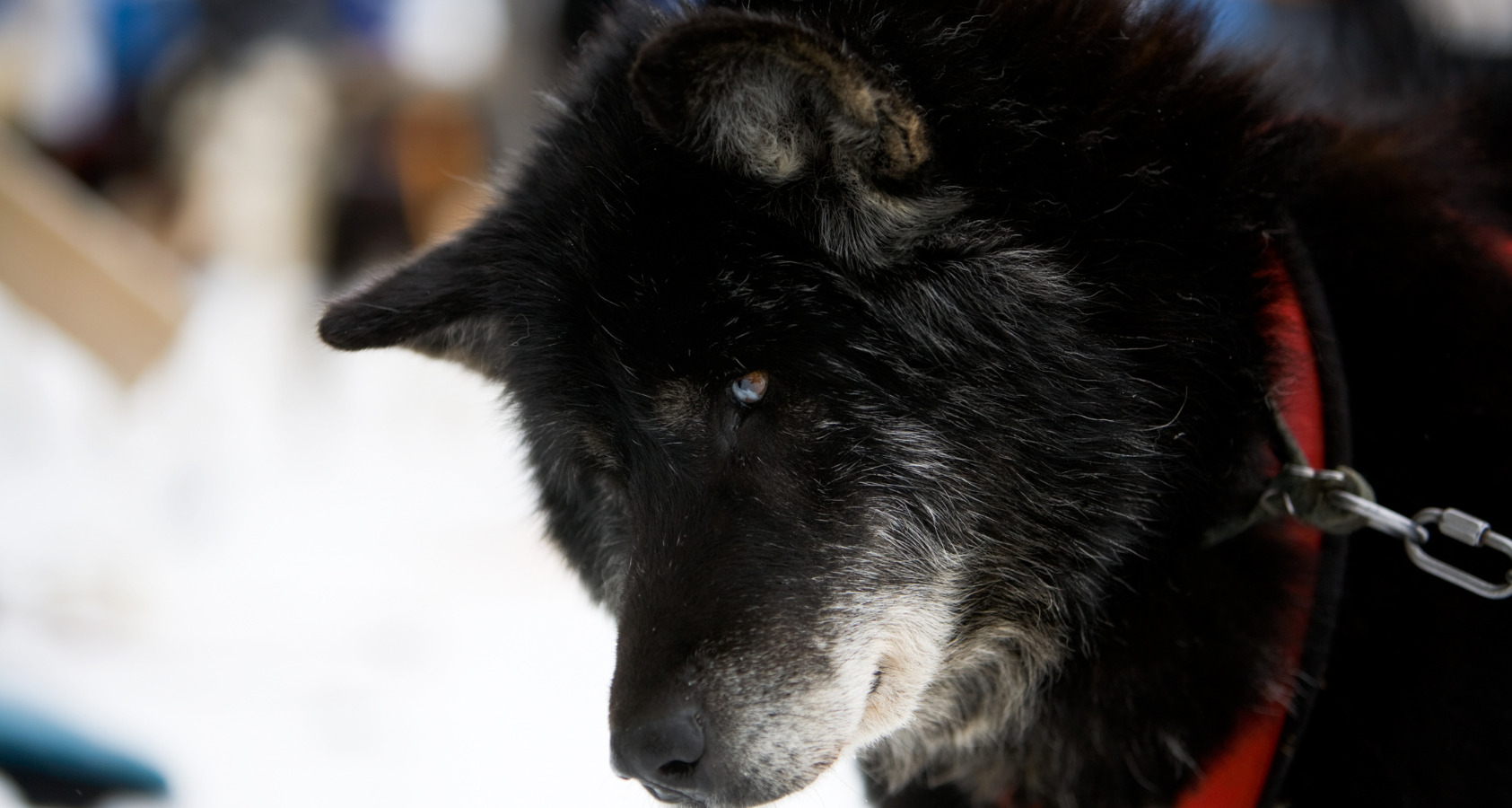
Canadian Eskimo is better known as a giant husky and share many physical features such as a wedge-shaped head, small pricked ears, and almond-shaped eyes. They also have a unique facial mask making them stand out.
However, their coat is thick and furry with a dense undercoat for weather protection. Canadian Eskimo dogs come in many colors including white, red, gray, black, cinnamon, and sable.
The personality of Canadian Eskimos is not much straightforward as they are loyal to their owners but may become challenging. They do well with other animals they know but are aggressive towards dogs outside their pack. They may fight or show dominance so you can expect anything from this dog breed. Secondly, plan proper training from puppyhood to prevent undesirable behavior in the family.
Canadian Eskimo’s thick, dense coat needs more grooming sessions, and brushing weekly or twice a week is necessary for this dog breed.
7. Alaskan malamute
Alaskan malamute is a strong working dog recognized by his sharp body features resembling huskies. They are medium-sized, having substantial bones, erect ears, and well-furred tails carried over the back. Their almond-shaped brown eyes also have a sparkle adding value to their clear facial features.
The Alaskan malamute coat is worth praising as it is dense, having two layers. The coarse outer coat is thick and dense, often called a guard coat, while the undercoat is oily and wooly, wet and cold. Alaskan malamute coat colors include solid white and combinations of white, gray, red, black, or silver.
Similarly, this dog breed is playful, loyal, and affectionate. They warmly greet everyone, regardless of strangers or first-time house guests that make them poor watchdogs. On the contrary, they enjoy spending time with their family members and making sure they are happily satisfied.
A thick, dense coat of Alaskan malamute needs frequent brushing, especially if the coat length is increased around the shoulders, neck, back, and in breeches.
8. Alaskan Klee Kai
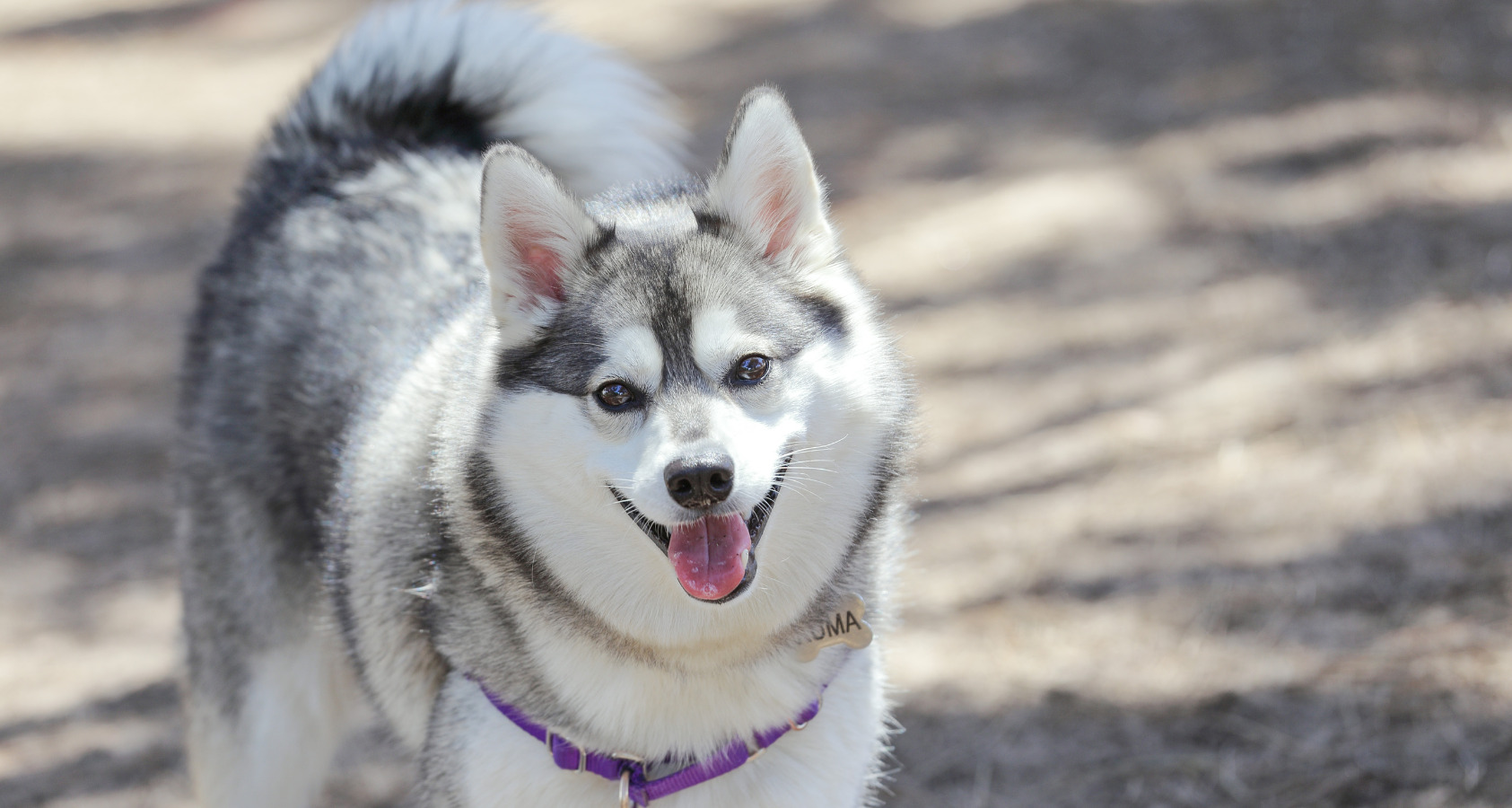
Alaskan Klee kai is a medium to small-sized dog breed and is perfect for people looking for a husky in a smaller version. You can have standard, miniature, and toy sizes in this breed, and all look like a replica of a husky. Being huskies’ close cousins, Alaskan Klee kai has erect ears, almond-shaped eyes, a facial mask with symmetrical markings, and a tail that curves over their back.
Their coat is medium-sized, dense, and thick that comes in colors such as black and white, gray and white, red and white, or all white with no markings.
When it comes to Alaskan Klee kai temperament, their strong interaction is witnessed with owners. They need their owner to be attentive and listen as they talk back. Occasionally, they are seen as reserved with strangers but readily accepted if introduced by the owner. Alaskan Klee kai are hunters so proper training and socialization help them accommodate other pets.
Overall grooming needs of Alaskan Klee kai are moderate, and they are good to go with regular brushing.
9. Utonagan
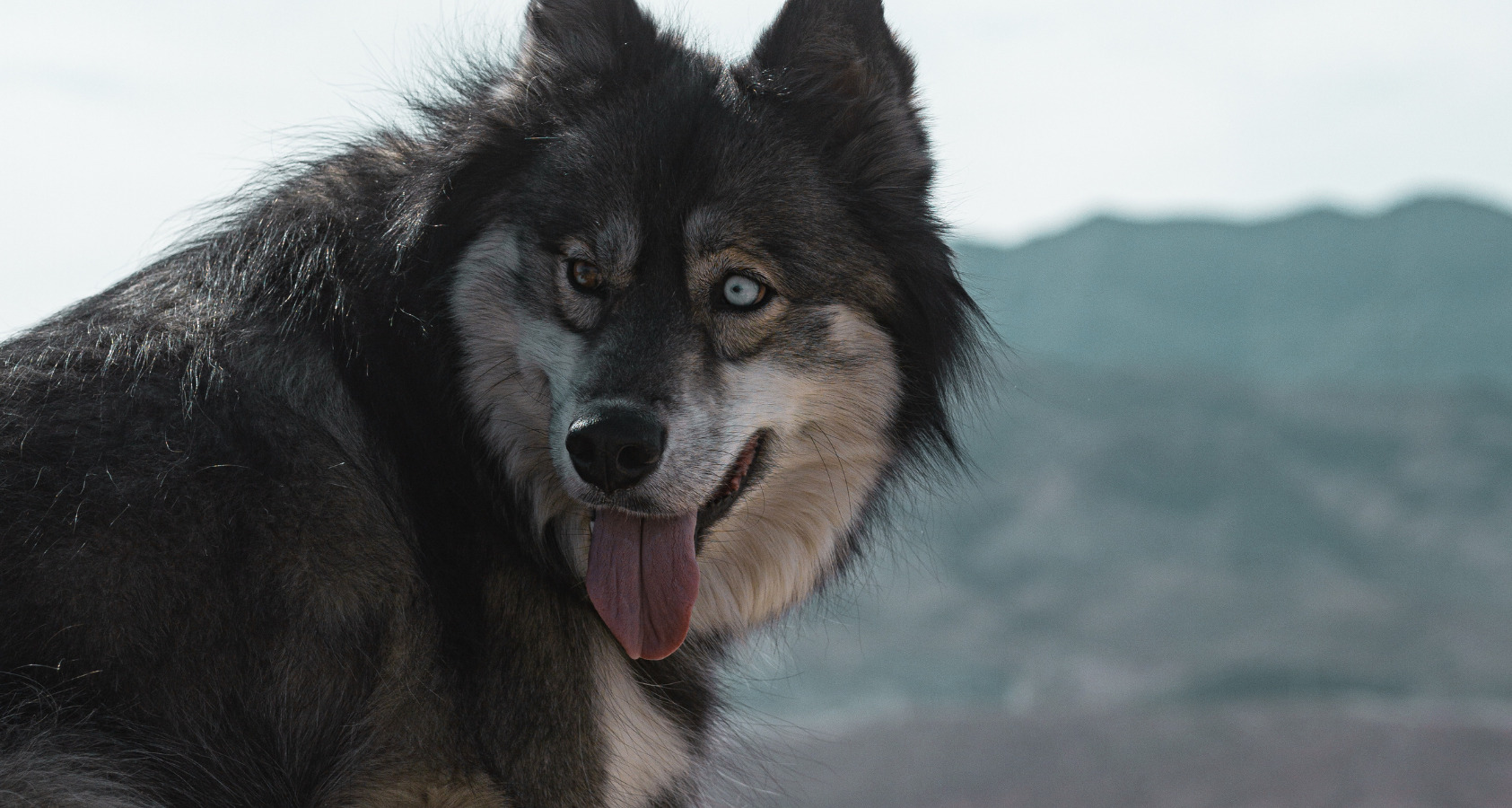
Utonagan is a large, strong, muscular dog breed carrying husky features. Their head is not so broad but is in proportion to the overall size. The nose is black, and the muzzle is slightly longer than the skull, while the eyes are almond in shape. The most prominent Utonagan eye color is yellow, but amber-eyed dogs also look stunning. Blues eyes are considered a fault in Utonagan.
The length of the Utonagan coat is medium but double-layered. The outer coat is thick and straight with guard hair, but the undercoat is soft and dense. Dogs of this breed come in various combinations of black, gray, and white.
Like Huskies, Utonagan is sweet-tempered but has vital signs of dominance. The dog loves spending time with the family and evenly with children, but early socialization is necessary to overcome behavioral issues.
Despite the length of the Utonagan coat, it is easy to groom and maintain with brushing twice a week.
10. Tamaskan
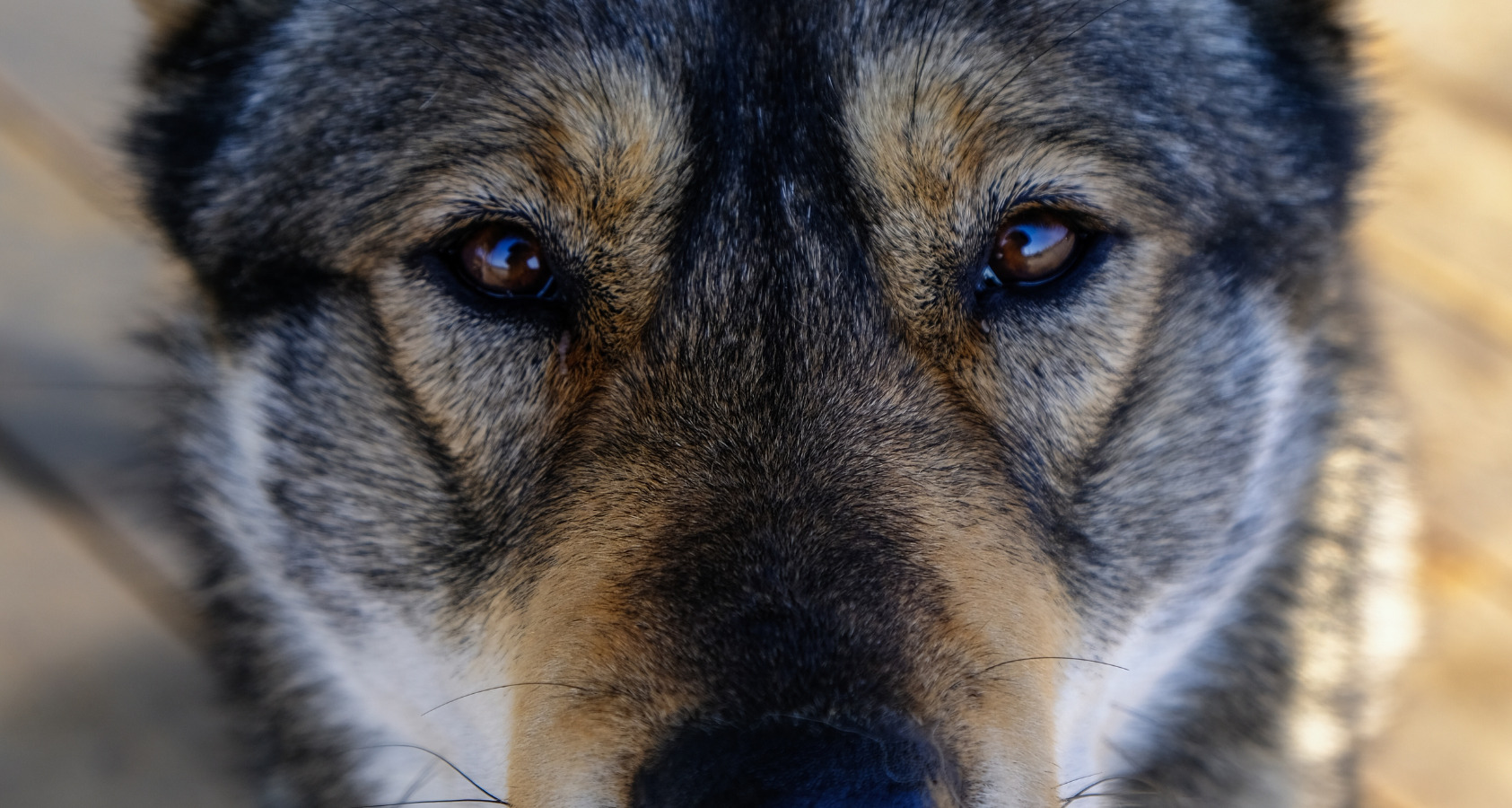
Tamaskan is a tall, athletic, muscular dog well suited to people looking for husky-like dogs. Physically they are quite parallel to huskies having a long and somewhat narrow heads. Their eyes are almond-shaped and come in a variety of colors though light shades are rare. Tamaskan ears are also relatively small, pricked, and triangular in shape, looking prominent.
Tamskan coat is medium in length, dense and straight that is multicolored. This dog breed exhibits three main colors, including red grey, wolf grey, and black grey.
Despite firm looks and sturdy stature, Tamaskan is a highly affectionate and friendly dog breed that loves to be in the family. The natural attitude of these dogs to get along with other dogs and children makes them good family pets, but they often get offended by strangers.
When it comes to grooming, Tamaskan is not hard to handle and needs moderate maintenance, like weekly brushing.
11. Akita Inu
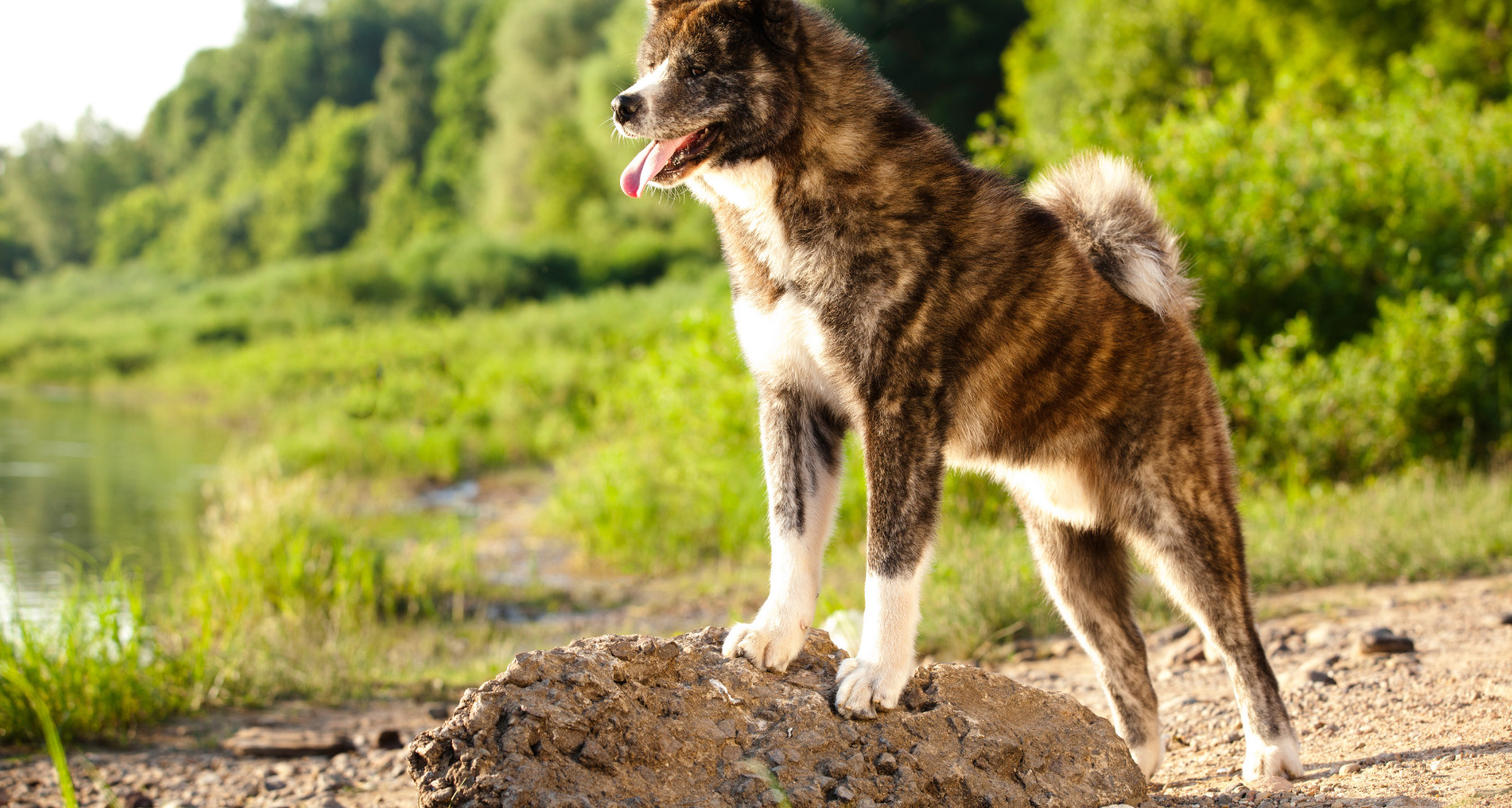
Akita Inu is a large, powerful dog with a sturdy appearance. They are well balanced with a large head, broad chest, and short muzzle, straight and strong legs. The Akita’s eyes are small, and so are the erect ears.
The coat of Akita is worth praising as it is short to medium in length and is very dense. Out of two layers, the guard coat is slightly longer and coarser, while the undercoat is soft that is well suited to colder climates. Similarly, Akita colors include white, brindle, and pinto.
Akita is loyal, affectionate, and caring towards his family and pets but wants to be the only dog in the house. However, the dog breed is good-tempered but does not go well with other dogs. Proper training helps Akita to accept other animals but most likely try to keep his status on top. They also get aloof with strangers.
The double coat of Akita needs to be brushed often to keep neat and healthy.
12. Finnish Spitz
Finnish spitz is a medium-sized dog with erect ears and pointed muzzles. The dog is well known for its fox-like look but also closely resembles huskies. Finnish spitz has an erect tail that curls over on the back, and the thick fur around the neck looks beautiful.
Finnish spitz has a thick double coat – the outer coat is harsh and is one to two inches long, while the undercoat is short, soft, and dense. The hair on the head is short, while the tail and back of the hind legs have long, dense hair. You can find gold, red and red gold color in Finnishthe spitz dog breed.
Even-tempered Finnish spitz is a favorite family pet due to their mild and gentle behavior. They are friendly and home-loving. They get conscious of the strangers but do not show aggression. Above all, they are patient enough to bear children and other pets without creating any fuss, which is rare in many husky-like dogs.
Finnish spitz requires frequent brushing and combing due to the plush coat.
13. Keeshond

Keeshond is a medium-sized active dog that appears large than they really are. They have prick ears, small black eyes, and facial masks that them on the list of dogs similar to huskies.
Keeshond coat is one of the main reasons for its popularity as it is a double coat. The outer guard coat is longer, while the wooly undercoat is soft and fluffy. The coat colors of this dog breed are also interesting as the undercoat is pale gray or creamy, but the outer coat is a mix of gray and black with black tips.
When it comes to Keeshond’s personality, they never fail to please their owners. They are playful, gentle, and affectionate, with no special training requirements. They better know what to do and how to do for showing love to their family members.
Keeshond needs extensive grooming sessions due to his long hair and thick coat.
14. Swedish Vallhund

Swedish Vallhund is a small to medium herding dog breed that has a long low body. They have wedge-shaped heads with triangular, erect ears. The eyes are oval, and the tail can be present or not in different dogs.
The Swedish Vallhund coat is double layered with a color variation of grey and red without markings.
Similarly, these dogs are sweet-tempered, affectionate, and friendly towards their family. They also get along with kids easily for playtime.
Give your Swedish Vallhund brushing every week.
15. Shikoku Dog

Shikoku is a medium-sized companion dog breed with dark brown almond-shaped eyes and erect ears. The curled furry tail comes over the back and makes it a constant dog posture.
The Shikoku has a thick double coat from which the outer coat is soft to the touch, and the undercoat is thick and tough. You can have sesame, red sesame, and black sesame coat colors in Shikoku dog.
Shikoku is a loyal, calm, and compassionate dog breed proving ideal family dogs, but they are somewhat reserved with active children or aggressive with strangers.
The overall grooming requirements of the Shikoku dog breed are moderate and weekly or twice a week brushing to keep their coat free from matting.
16. West Siberian Laika
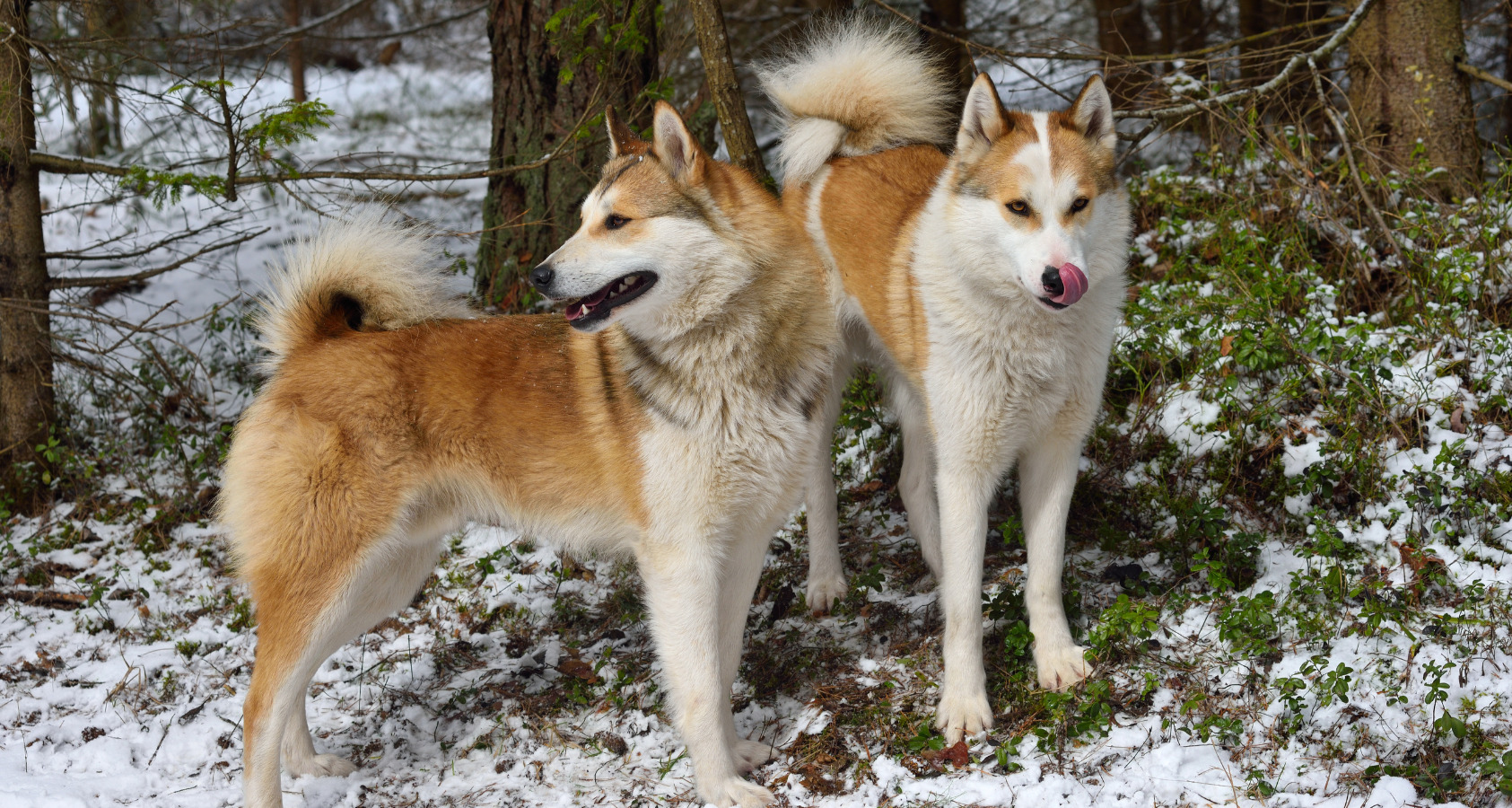
West Siberian Laika is a medium-large breed with a husky-like appearance. The head is long, and the nose is broad with wider nostrils that are always black in color. They have prominent oval eyes and triangular shape erect ears with pointed tips.
The West Siberian Laika coat is dense, thick, and medium in length. The undercoat is thicker than the outer coat, which stays away from the body. But the undercoat is very soft to the touch and dense. Interestingly, these dogs have longer hair on the cheekbone, forming a sort of beard. Plus, the most popular colors of west Siberian Laika are white, red, salt and pepper, and all shades of gray.
West Siberian Laika is a bit tricky dog breed and not good for first-time owners due to its stubborn attitude and nuisance that desperately need constant socialization.
Brushing of West Siberian Laika depends on its shedding season – it requires daily brushing when he is shedding heavily, while weekly combing will be enough when the shedding period is gone.
17. Norwegian Elkhound
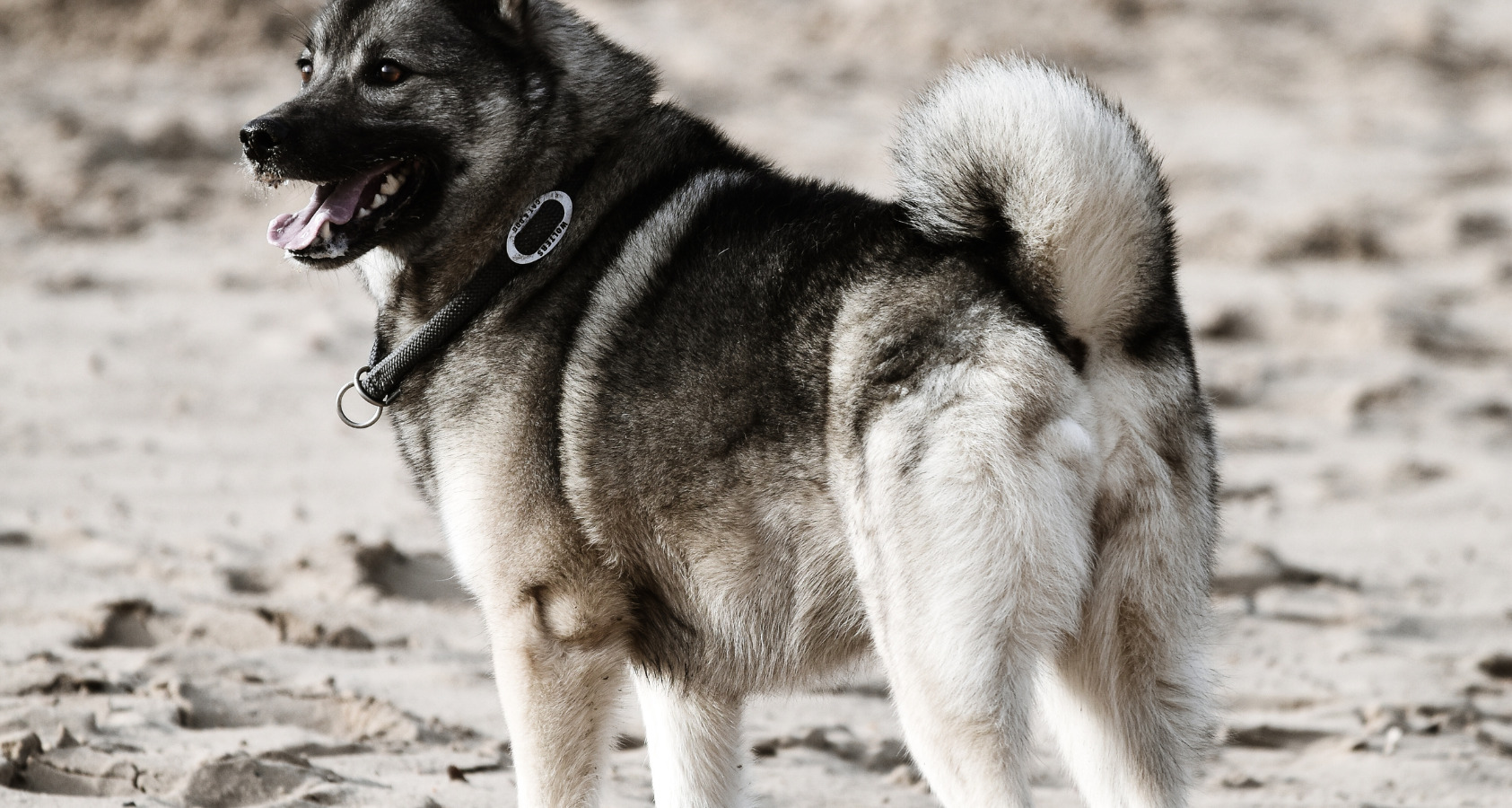
Norwegian Elkhound is a medium-sized hardy dog with all-time hunting desire. The head of the Norwegian dog is broad and wedge-shaped, and the ears stand erect like huskies. You will find the eyes of this dog dark brown while the ears, muzzle, and tail are black.
The Norwegian Elkhound has a double coat – the outer coat is short, thick, and smooth, while the undercoat is wooly and soft to the touch. They are mostly grey or silver.
Their independent yet affectionate behavior makes them good for families with older children or no children at all. So, be cautious to have this pet in a family with kids or small animals and give special attention to their training.
These dogs are somewhat independent but share a great bond with family members.
18. Northern Inuit

Northern Inuit is a medium-sized dog with an athletic build and strong chest. They have erect ears similar to huskies and a long muzzle. Northern Inuit tail legs are strong to make them sturdy, and the tail is straight. Keep it in mind a true Northern Inuit will never have a curled tail, and it is the best sign of finding a true pup.
Their double coat is thick and dense with a harsh outer coat and soft undercoat. Northern Inuit comes in a variety of colors, including black, white, grey, apricot, and sable.
Northern Inuit is a good companion pet due to its friendliness and loyalty. The dog is affectionate but may show aggression if controlled improperly, so training and socialization are best to avoid any misconduct.
Given the thickness of the Northern Inuit coat, the dog requires frequent brushing and grooming.
19. Kugsha
Kugshas are large dogs with distinct head sizes and shapes. They stand tall and have relatively large head that is in accurate proportion to their muscular body. The muzzle is nearly the length of the skull, and the eyes are almond-shaped, resembling huskies. The fuzzy, erect, and triangular ears of Kugsha are also not different from huskies, while the neck is muscular and medium length.
The Kugsha coat is dual-layered – long outer hair and soft undercoat. You can expect shades of brown, black, gray, fawn, and white in the Kugsha dog breed.
Kugshas have a slightly different temperaments, and they are not easy to raise. They are highly sensitive and prone to social anxiety needing a significant amount of time. At the same time, early socialization is a must for having this dog breed in your house because prey drive can make them challenging.
They do not require frequent brushing to keep the coat neat and dust free. Weekly brushing is enough for maintaining coat outlook.
20. Seppala Siberian Sleddog
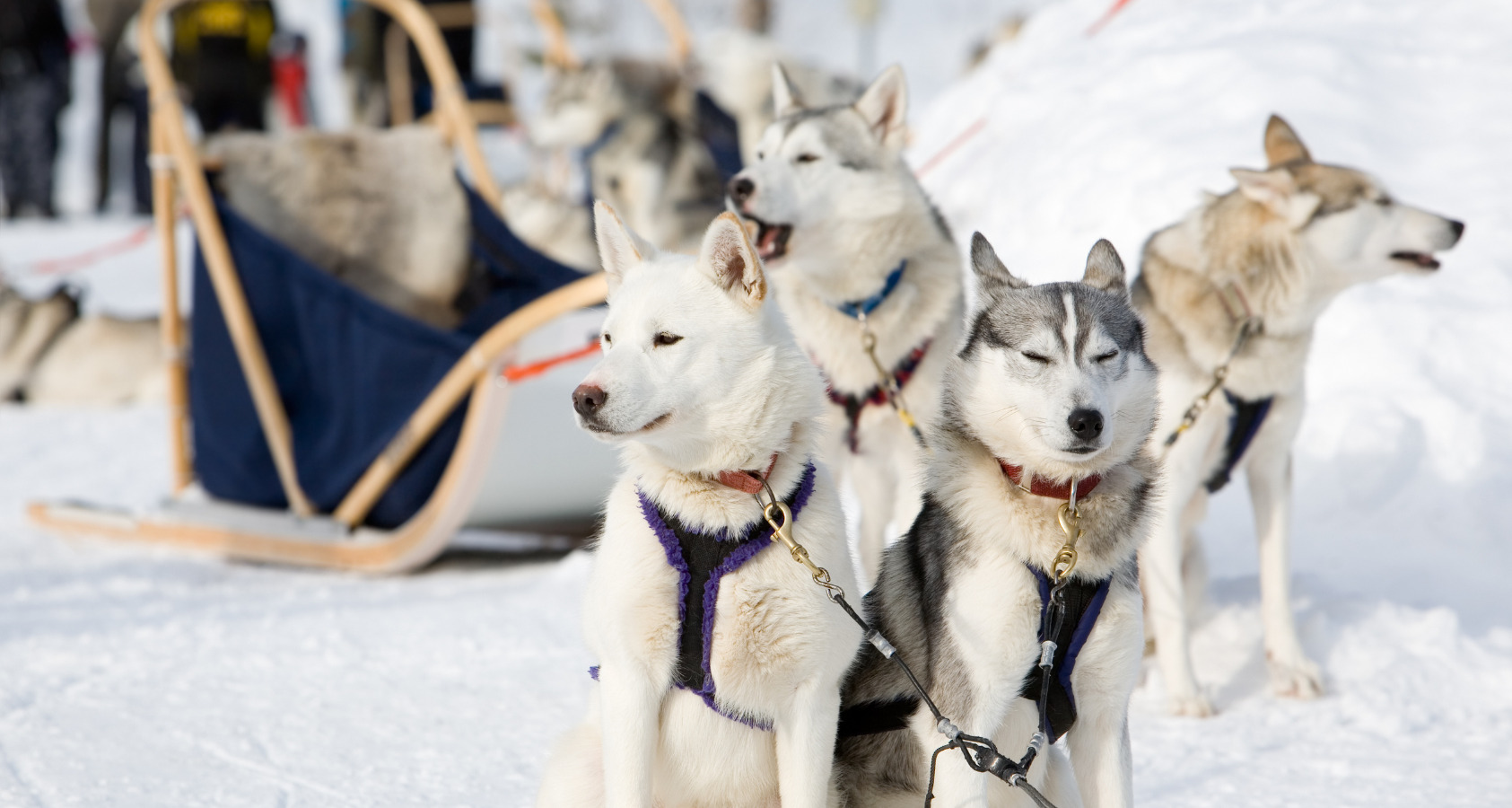
Seppala Siberian Sleddogs are working dogs with longer bodies and legs. They are lighter in weight and have erect ears that are tall that set close together. The tail of Seppalas is naturally held high and curved over the back when alert. Their eyes can be blue, brown, or any combination of the two.
The Seppala Siberian Sleddog coat is medium in length and dense. Their undercoat is as long as the outer coat while you can have colors including pure white, black, charcoal gray, brownish gray, blue-gray, and sable.
Seppala’s are good family dogs with proper training and socialization. They tend to be obedient only if they find the trainer or owner stronger-minded than themselves. If the handler fails to show leadership qualities, the dog may get challenging and hard to raise with other family pets.
The grooming requirements of Seppalas are moderated and need weekly brushing.
21. Finnish Lapphund
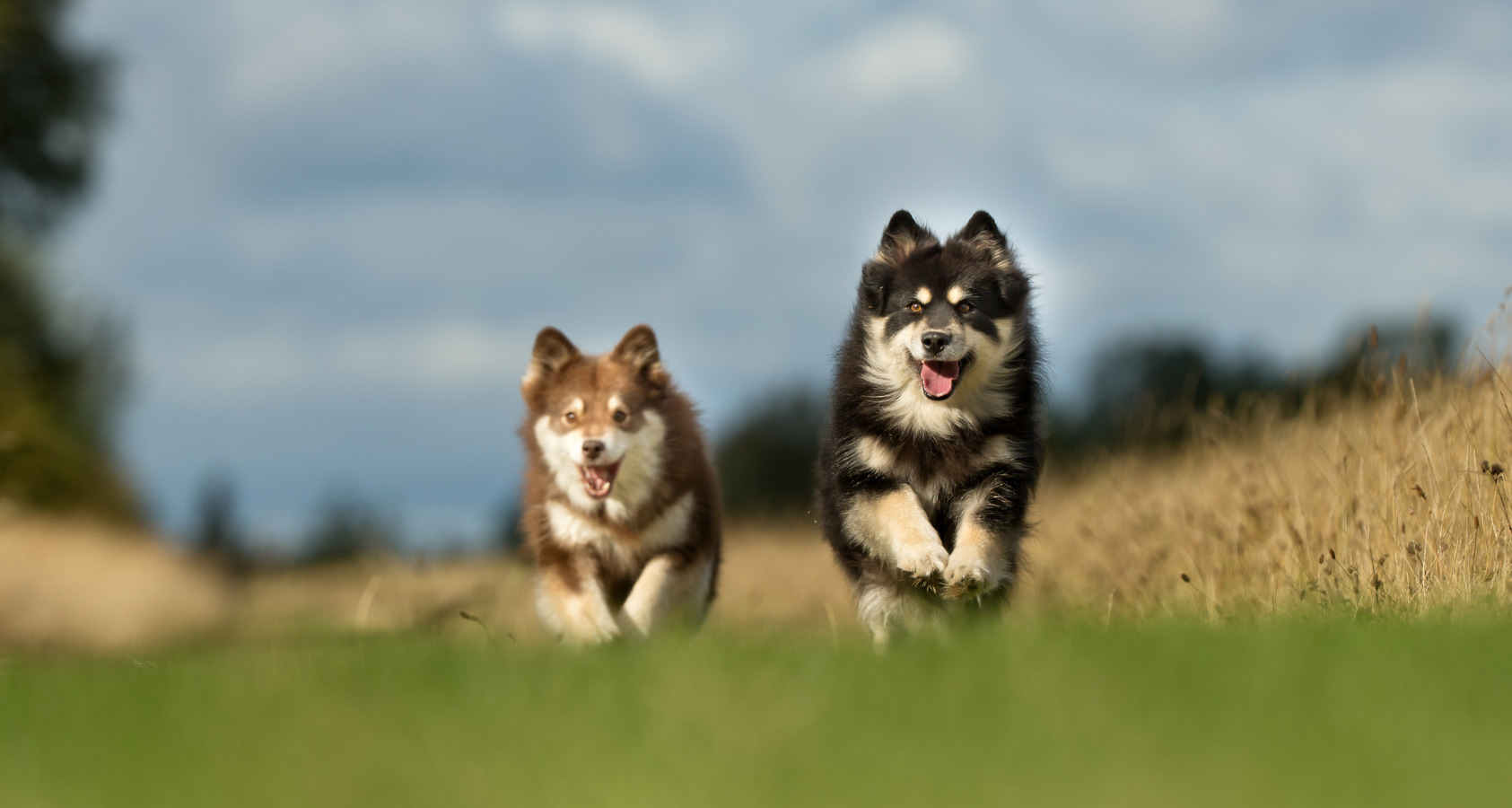
Finnish Lapphund is a medium-sized herding dog that looks like a husky but is somewhat smaller in size. The dog has triangular upright ears and oval eyes, while the head is medium-sized with a short muzzle.
They have a double coat consisting of a coarse outer coat and a soft undercoat. The Finnish Lapphund comes in a variety of colors, including black, white, red, brown, and combinations of colors like black and tan.
Finnish Lapphunds are friendly and affectionate with no aloofness. They share a good bond with kids and other family pets to have great play time.
A comparatively long and thick Finnish Lapphunds coat needs more time for a grooming session, and you may need to brush the coat daily, depending on the coat status.
Conclusion – Dog Breeds Similar to Huskies
Huskies are friendly and affectionate dogs with special facial masks that make them distinct. When finding dog breeds similar to huskies, the face mask, upright ears, and muzzle are considered the most prominent features. If you successfully want to get all these traits, mark any of the above-mentioned dogs breeds your favorite and give the husky-like dog breed a special place in your house.
About The Author
I'm a content writer and researcher. But bottom line, I loveee animals. I had my first animal which was a guinea pig at age 8. Later had a bunny, dog and a lot, a lot of fish. Writing about what I know about pets will allow me to share my knowledge and love for them with everyone else. Dealing with dogs my entire life, I know a lot.


